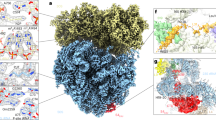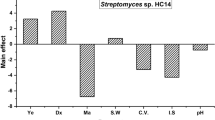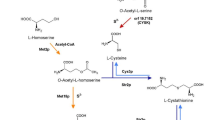Abstract
During an investigation of the formation of extracellular nitrogen compounds by fungi1, the effect of chloramphenicol on this process was tested, since in bacteria chloramphenicol is known to interfere with protein synthesis2 3 and with the synthesis of enzymes concerned with amino-acid metabolism4, although it has no effect on the growth of many fungi5.
This is a preview of subscription content, access via your institution
Access options
Subscribe to this journal
Receive 51 print issues and online access
$199.00 per year
only $3.90 per issue
Buy this article
- Purchase on SpringerLink
- Instant access to full article PDF
Prices may be subject to local taxes which are calculated during checkout
Similar content being viewed by others
References
Morton, A. G., and Broadbent, D., J. Gen. Microbiol., 12, 248 (1955).
Gale, E. F., and Folkes, J. F., Biochem. J., 53, 493 (1953).
Wisseman, C. L., Smadel, J. E., Hahn, F. E., and Hopps, H. E., J. Bact., 67, 662 (1954).
Sorm, F., and Grunberger, D., Chem. Listy, 47, 1657 (1953).
McLean, W. I., Schwab, J. L., Hillegas, A. B., and Schlingman, A. S., J. Clin. Investigation, 28, 953 (1949).
Author information
Authors and Affiliations
Rights and permissions
About this article
Cite this article
BROADBENT, D., TERRY, D. Effect of Chloramphenicol on a Fungus. Nature 182, 1107–1108 (1958). https://doi.org/10.1038/1821107c0
Issue date:
DOI: https://doi.org/10.1038/1821107c0



